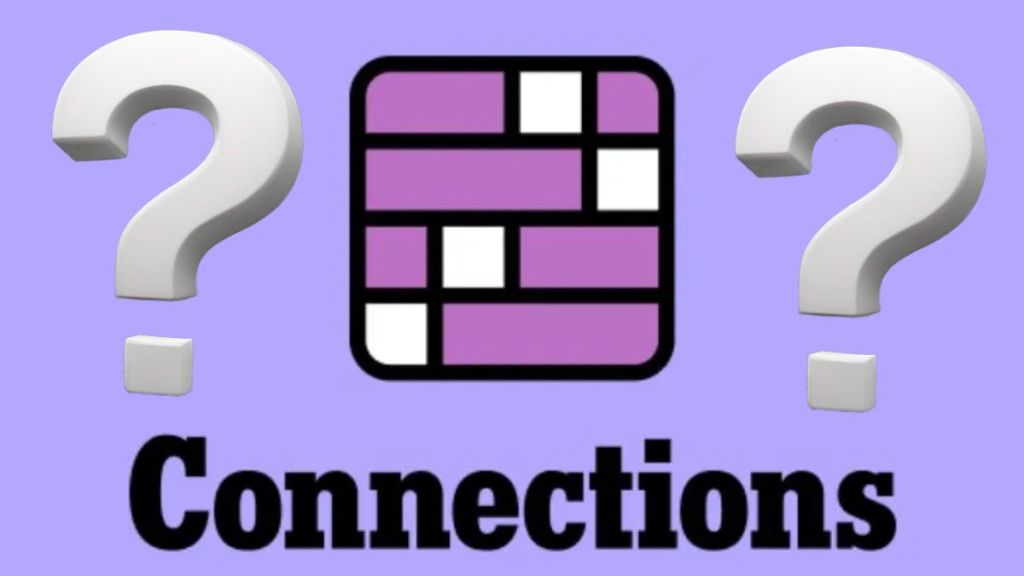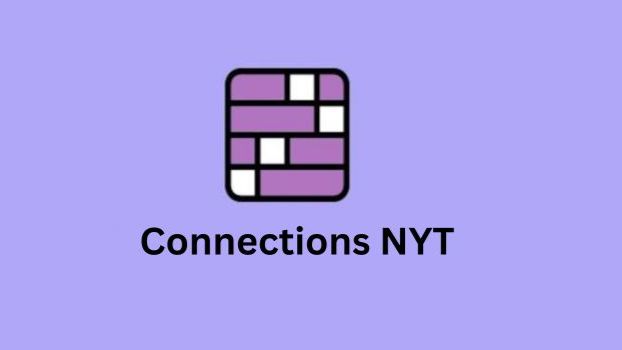The New York Times has a long-standing reputation for producing interesting and difficult challenges. Puzzle aficionados all across have taken a keen interest in NYT Connections, their most recent offering. Unlike conventional word puzzles, Connections tests your ability to classify apparently unrelated words depending on hidden similarities. If you’re seeking for fast “answers for connections today,” you could be tempted to hunt for a cheat sheet; yet, the real benefit is realizing the underlying logic and honing your problem-solving techniques.
What is the NYT Connections Puzzle?
Every day word game NYT Connections challenges you with a 16 word grid. Your job is to identify four separate groups of four words apiece in which every group has a relationship. The links may be based on topics, widespread usage, secret meanings, even puns. The architecture of the game promotes lateral thinking, so challenging your vocabulary and your capacity to identify connections between words that aren’t immediately clear.
The Principal Mechanics
There are sixteen words in the Grid, which initially would seem to have little in common. You are looking for underlying themes.
The aim is to cluster four words with a common link to create four distinct groupings.
Often words have several connotations or meanings. A term could seem to fit two different categories, hence careful study is quite important.
The Enticement of Daily Puzzle Solutions
https://news24online.com/wp-content/uploads/2024/11/NYT-Connections-today_b9800a.jpg?w=1024
Every day when you check in, you find a fresh collection of words—a new challenge that tests your creative ability. Many players who find themselves trapped search online for “nyt connections today answers,” which makes sense. Although searching for the answers can be alluring, here are some reasons why working on the puzzle alone helps:
Through challenging yourself to solve the puzzle, you develop your critical thinking, vocabulary, and pattern recognition ability.
When you arrive at that “aha!,” moment when you at last find the link, the excitement is much sweeter when you have arrived on your own.
Learning Process: Examining why a certain group could be associated will help you to widen your viewpoint and enhance next methods of addressing problems even if you do not obtain the solution right away.
Methods to Approach NYT Connections
Investing time in building methods will change your approach to the problem even if you’re interested in the daily responses. These methods should enable you to solve the challenge without turning to spoilers:
1. Start broadly then narrow down.
Start by running over all sixteen words. Look for any clear themes or categories. Sometimes a few words—for example, if multiple terms describe kinds of cuisine, sports, or music—will stand out as precisely connected. Once you find a possible group, save those words and then examine the others.
2. Think about several meanings.
Many words have two meanings or can be understood in several ways. A word like “bark,” for instance, may describe the sound a dog produces or the outside covering of a tree. Think about this:
Would this word fit into a group connected to animals?
Could it fit within a botanical or natural group? Considering all the different interpretations helps one to find surprising links.
3. Apply elimination strategies
Eliminating terms from consideration comes naturally once you have one or two groups identified. Sometimes accurately arranging a few words could give hints about where the others would fit. To graphically map out your ideas, write down possible groups on paper or using an online notepad.
4. Use lateral thought.
NYT Connections calls for creative thinking outside the box quite a bit. A category could be something less clear, such “things you might find in a toolbox,” or “terms used in a particular sport,” than “animals” or “colors.” Not hesitate to give abstract links—that which are not immediately apparent some thought.
5. Search for Hidden Trends.
Sometimes the link is buried under puns or word associations. Investigate that further if you come across a few terms that seem to have a comical or lighthearted connection. If words like “pitch, “bat, “diamond,,” and “base” show up, for instance, you might think of a baseball-related connection—even if one of the phrases isn’t a clear baseball term at first look.
Exercises on Puzzle Board Analysis
Your chances of success will be much enhanced by a methodical grid analysis. These other pointers on how to break up the puzzle should help:
Organizing according to category
Start by enumerating, from your first scan, several possible themes. Themes might range from “food” to “elements in a chemical series,” or both broadly and specifically.
Write down the words that immediately connect to every theme. If “apple” shows up, for instance, think about related terms like “banana” or “cherry,” even though they aren’t exactly on the grid—they could represent metaphorical connections.
Considering Word Location

Although the words on the screen may be arranged haphazardly, occasionally arranging them visually—by writing them down—helps you find links that might not be clear if the words were given in a list.
Think About What Is Missing
Sometimes your groups will improve if you consider what category a collection of words might fit and then discover that one of the terms does not belong. Ask yourself whether a term fits into another group totally or if it is a “odd one out” in a possible category.
Frequent Trends in NYT Connections
Though every daily puzzle is different, certain repeating themes and patterns usually show up. Your hidden weapon may be knowledge of these typical patterns.
Illustrations of Common Categories
Colors: Sometimes groups are based on shared colors (e.g., “red,,” “blue, “green”). Search for phrases that would also be names of colors or objects usually connected with a given hue.
Sports and Teams: The puzzle might have words linked to sports—terms like “pitch,,” “bat,,” or even team nicknames sprinkled around the grid.
Food and drink can fall into categories including kinds of cuisine, drinks, or even culinary techniques. Should many words suggest gastronomic themes, they could come together logically.
Some puzzles depend on the functional link among words. Consider objects that would fit a certain setting, such in a kitchen or a workshop.
Pun-based or hidden links
Words with both literal and symbolic meanings might group themselves depending on a pun or a play on words.
Sometimes puzzles draw on contemporary allusions, including movie titles, band names, or trending issues in pop culture. If you know of cultural allusions, they could offer the key to connecting some terms together.
Tools & Strategies to Improve Your Solving of Puzzles
Although the main excitement of NYT Connections is the task itself, many solvers use a range of techniques to support their approach without explicitly searching the daily answers.
Document It Clearly
One can find great benefit with a basic pen and paper. Jot down the words, sketch lines linking concepts, and build a visual map. Sometimes the act of writing might lead to a connection not shown by reading alone.
Create Associations for Your Brainwork
Give some time to consider all the several interpretations of every word. Even if a certain association seems unrealistic, it could well be the secret to opening a latent category.
Talk among fellow enthusiasts.
Talking about a puzzle might be a great approach to get fresh ideas if you belong to a puzzle group or forum. Ideas shared without explicitly disclosing solutions could cause “aha” moments that help everyone.
Stop Here
Sometimes a little break from the puzzle will help one to find clarity. When you get back, you can find links that were invisible before.
Managing the Need for Right Away Solutions
When stuck—especially on a difficult puzzle—searching for “nyt connections today answers” makes sense. Still, keep in mind that the game’s actual fun comes from the discovering process. Here are several reasons waiting on a quick search could help:
Every puzzle you complete increases your skill set on the learning curve. Your capacity for fast connection spotting will develop over time.
The instant the puzzle pieces click into place is especially fulfilling. Looking up answers can cause you to miss the delight of personal success.
The act of considering the riddle, investigating several sides, and reaching your own conclusions can help you to develop creatively in different spheres of life.
An Outlook on Puzzle-Solving’s Future
Expect additional debates, analysis, and even community-driven strategies to surface as NYT Connections’ appeal keeps rising. These are some patterns you could find in the next days:
Online forums, social media groups, and specialized websites could begin to host conversations exploring shared puzzle strategies and even breaking apart old problems.
Some aficionados may create digital tools or apps that let you evaluate possible connections visualistically and without disclosing the answers. Those who appreciate the challenge of solving puzzles may especially find these instruments quite helpful.
Themes and links inside the puzzles could change with the always shifting cultural scene, mirroring popular culture, current trends, even historical references. Key will be keeping educated and adaptable in your perspective.
In summary, appreciating the difficulty
Though it’s natural to be inquisitive about today’s responses or look for “answers for connections today” online, the core of puzzles like NYT Connections is the road toward discovery. Accept the difficulty, apply the above mentioned techniques, and savor every second of your process of solving problems. Recall that every problem you solve on your own not only boosts your self-confidence but also helps a growing community of passionate solvers value lateral thinking as an art.
Focusing on strategy, meticulous observation, and imaginative association will help you improve your puzzle-solving ability without compromising the experience for others or yourself. Try these strategies the next time you come across a particularly difficult combination of words; you will find great gratification in working out the links on your own.
Discover professional advice and techniques for completing the NYT Connections puzzle of today in 140 characters at most. Improve your ability without sacrificing the enjoyment!
